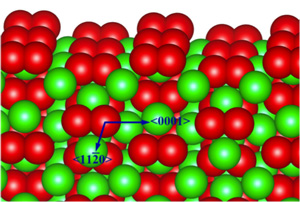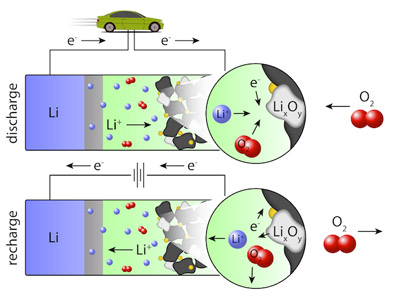
Li-air batteries have been described as the “holy grail” of energy storage devices. By combining Li, nature’s third lightest element, with oxygen from air, a lithium-oxygen couple is theoretically capable of matching the high specific energy of gasoline. The capacity of a practical Li-air battery could far exceed that of today’s Li-ion cells, and allow battery electric vehicles to travel 300-500 miles between recharging, similar to gasoline-powered vehicles.
Despite this potential, today’s Li-air batteries are not yet ready for prime time. The efficiency of these batteries is low, and they cannot be discharged fast enough to satisfy the power requirements for vehicle applications. Research in ME Assistant Professor Don Siegel’s group is helping to identify the factors responsible for these limitations. Using atomic scale computational modeling, Siegel’s students and postdocs have elucidated mechanisms associated with slow charge and mass transport in these cells. By establishing the root causes for poor performance it will be possible to devise strategies – for example new catalyst compositions – that specifically target these limitations, and move Li-air batteries closer to commercialization.

Siegel’s research was recently published in the Journal of the American Chemical Society, and is part of two international collaborations: the Department of Energy’s U.S.-China Clean Energy Research Center for Clean Vehicles, and the UM-Shanghai Jiao Tong University Collaboration on Renewable Energy Science and Technology.
For the link to the JACS article please use: http://pubs.acs.org/doi/abs/10.1021/ja208944x